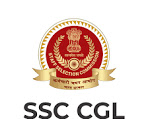Latest SSC CGL & UPSC Updates: What’s New in Pattern & Syllabus
If you're planning to appear for SSC CGL or UPSC in 2025, there’s some important news you should know. Both these exams have seen key changes in their patterns and syllabus that can directly affect your preparation strategy. Whether you're a first-time aspirant or a repeat candidate, being aware of the latest updates is the first step toward smart and successful exam preparation.
SSC CGL and UPSC Civil Services are two of the most sought-after government exams in India. Lakhs of aspirants appear for them every year, aiming for top jobs in central government departments and the Indian administrative framework. Because of their popularity and competition, even a small change in the exam format or subject weightage becomes crucial.
Starting with SSC CGL 2025, the Staff Selection Commission has brought subtle but impactful changes. First, the Tier 1 exam remains qualifying in nature, but the focus on reasoning and general awareness has increased. The question framing has also become more analytical, meaning rote learning will no longer be enough. You will now see more application-based questions even in general intelligence and quantitative aptitude sections.
Another major update in SSC CGL is in the Tier 2 exam. The commission has now integrated a section that focuses on data interpretation and logical reasoning more deeply. This means aspirants will have to improve their speed and accuracy in solving graphs, charts, and case-based data questions. Also, the computer knowledge section has been slightly upgraded. Topics like cybersecurity basics, email etiquette, and MS Office tools are now being given more importance. It’s no longer just about typing speed but also digital awareness.
Now let’s shift to UPSC, where the Civil Services Exam (CSE) is considered one of the toughest exams in India. The UPSC CSE 2025 has undergone notable changes, especially in the Preliminary stage. CSAT, which was earlier a qualifying paper, is now getting more attention from aspirants because the difficulty level has increased. You can expect tougher comprehension passages, more tricky logical reasoning, and advanced mathematics at the Class 10 level.
In the General Studies Paper 1 of UPSC Prelims, current affairs are now being asked in a deeper and more interlinked way. Static topics like history, polity, and geography are being mixed with contemporary events. So, if you're studying Indian freedom struggle, you may be asked about its relevance in today's socio-political context. The key is to develop an analytical mind and not just rely on monthly current affairs magazines.
When it comes to the Mains stage, the UPSC 2025 syllabus is largely the same but with a stronger emphasis on governance, technology, and ethics. In the GS Paper 2, more questions are being asked on international relations and India's role in global diplomacy. Paper 3 has started including more content from emerging technologies like artificial intelligence, data privacy, and digital economy. Aspirants are expected to present a well-balanced answer combining theory and real-life examples.
One major update is the optional subject trend. Subjects like Anthropology, PSIR (Political Science and International Relations), and Sociology continue to dominate the list of most chosen optionals. However, UPSC has started focusing more on subject-specific depth. For instance, in PSIR, you’re expected to critically evaluate global political theories in light of current geopolitical events.
The Essay paper in UPSC Mains has also evolved. While earlier topics were philosophical or abstract, the 2025 trend shows a shift towards social impact and real-world scenarios. Writing skills, flow of ideas, and a multidimensional approach are now more important than ever. To succeed, you need to develop the habit of reading editorials, analyzing issues from various angles, and practicing essays regularly.
As for language papers and the ethics paper, there is now an expectation of more case-based and scenario-driven questions. So just memorizing definitions or frameworks won’t help. You’ll need to understand and apply ethical principles to modern-day situations like social media dilemmas, public administration challenges, and governance failures.
Coming back to SSC CGL, one thing that remains consistent is the importance of practice. The updated exam pattern focuses more on logic, application, and smart solving. So, if you’re someone who has focused more on theory till now, it’s time to change your strategy. Solve more mocks, work on accuracy, and learn short tricks for quantitative aptitude.
For both exams, revision strategy is key. Don’t wait for the syllabus to end before starting mock tests. With pattern changes, mocks have become more crucial to test adaptability and time management. If you’re preparing for UPSC, make answer writing a part of your daily routine. For SSC CGL aspirants, daily practice of puzzles, DI sets, and comprehension passages will help a lot.
In terms of resources, for SSC CGL 2025, you can rely on updated books like Rakesh Yadav for Maths, SP Bakshi for English, and Lucent’s for General Knowledge. For UPSC 2025, standard sources like NCERTs, Laxmikant for polity, Spectrum for modern history, and The Hindu/Indian Express editorials continue to be important. Also, integrate PIB, Yojana, and government websites for accurate current affairs updates.
To summarize, both SSC CGL and UPSC have made changes that demand deeper understanding, practical application, and consistent practice. Gone are the days when you could simply memorize content and hope to clear the exam. The competition is tough, but the smart aspirant will always adapt.
Start preparing today by aligning your strategy with these updates. Whether your goal is to become an Income Tax Officer through SSC CGL or an IAS officer through UPSC, staying updated with the latest pattern and syllabus will give you a definite edge in 2025.












